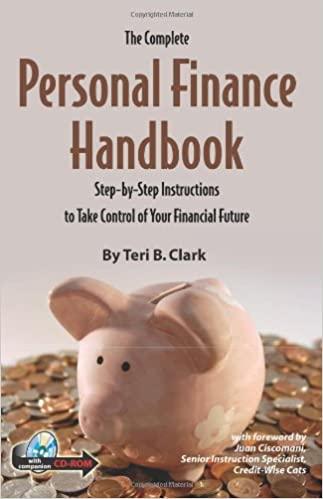Question
Commonwealth Construction (CC) needs $3 million of assets to get started, and it expects to have a basic earning power ratio of 15%. CC will
Commonwealth Construction (CC) needs $3 million of assets to get started, and it expects to have a basic earning power ratio of 15%. CC will own no securities, so all of its income will be operating income. If it so chooses, CC can finance up to 40% of its assets with debt, which will have an 8% interest rate. If it chooses to use debt, the firm will finance using only debt and common equity, so no preferred stock will be used. Assuming a 30% tax rate on all taxable income, what is the difference between CC's expected ROE if it finances these assets with 40% debt versus its expected ROE if it finances these assets entirely with common stock? Round your answer to two decimal places.

Which of the following statements is most correct?
- The higher its tax rate, the lower a firm's BEP ratio will be, other things held constant.
- The higher the interest rate on its debt, the lower a firm's BEP ratio will be, other things held constant.
- The higher its debt ratio, the lower a firm's BEP ratio will be, other things held constant.
- If a firm's expected basic earning power (BEP) is constant for all of its assets and exceeds the interest rate on its debt, then adding assets and financing them with debt will decrease the firm's expected return on common equity (ROE).
- If a firm's expected basic earning power (BEP) is constant for all of its assets and exceeds the interest rate on its debt, then adding assets and financing them with debt will raise the firm's expected return on common equity (ROE).
Step by Step Solution
There are 3 Steps involved in it
Step: 1

Get Instant Access to Expert-Tailored Solutions
See step-by-step solutions with expert insights and AI powered tools for academic success
Step: 2

Step: 3

Ace Your Homework with AI
Get the answers you need in no time with our AI-driven, step-by-step assistance
Get Started


